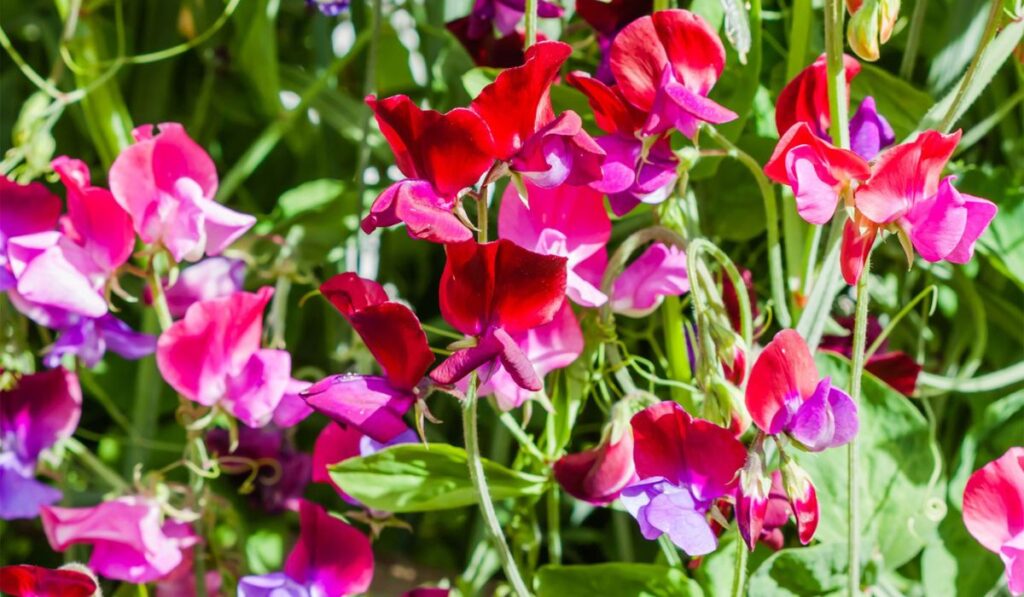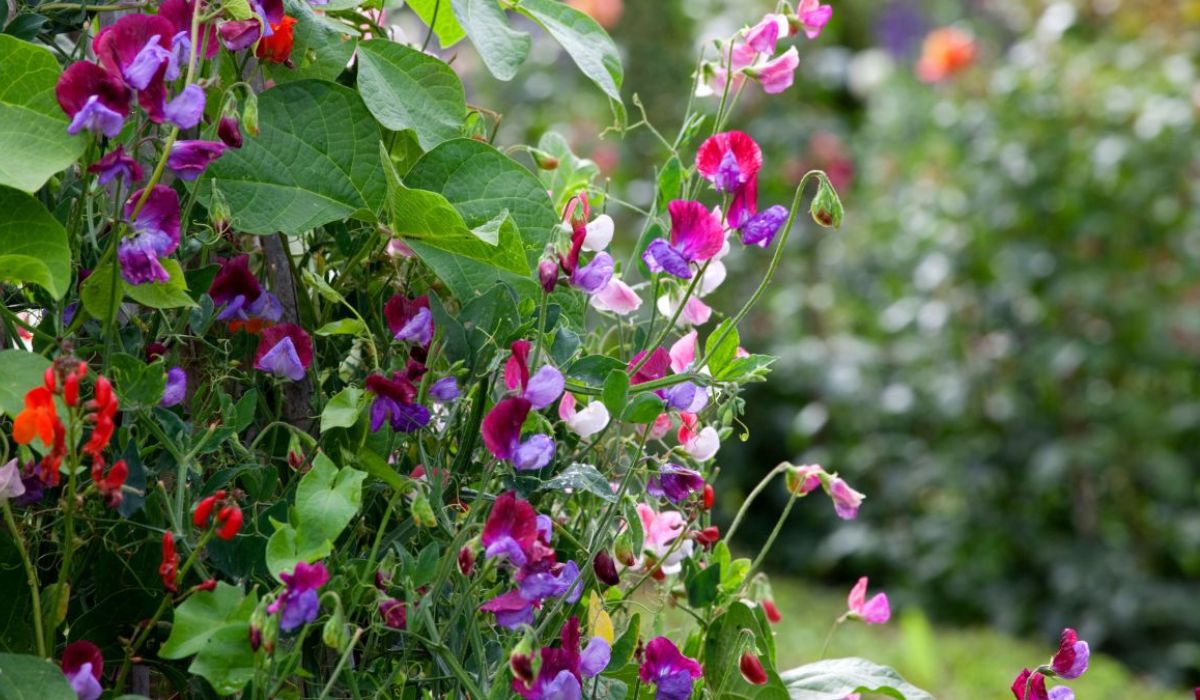Flora with both visual appeal and pleasant scents are always in high demand among gardeners. Lathyrus odoratus, or sweetpeas, are an attractive, fragrant, and versatile addition to any garden. These annual flowers have been prized for centuries because of the Mediterranean environment in which they thrived. In this post, we’ll learn about the origins, varieties, and best practices for cultivating sweet peas so that you can enjoy these beautiful blooms in your own garden.
History and Origin
Sweetpeas have been entrancing people with their beauty since the 17th century. The plant was brought to England from its native Sicily in the late 17th century. In a short amount of time, sweetpeas rose to the top as a favorite among English gardeners and florists. Sweetpeas have been cultivated and hybridized into numerous varieties, each with its own distinct set of qualities and allure.
Types and Varieties
Gardeners can choose from a wide variety of colors and shapes when planting sweetpeas. The ‘Cupani,’ a wild sweet pea with rich maroon and violet flowers, is one of the most popular sorts; the ‘Spencer’ types, with their enormous, ruffled blooms, are another; and the ‘Old Fashioned’ types are prized for their nostalgic allure. Colors ranging from pink and purple to red, white, and blue can be found among the many varieties of sweetpeas. Sweetpeas come in a wide range of colors, shapes, and sizes, and their enticing scent makes them a popular choice among gardeners.
Growing Sweet Peas
It’s crucial to give sweet peas ideal circumstances for growth if you want to harvest any of them. Sweet peas are most successful when grown in partial shade to full sun. Soil high in organic matter and with good drainage is ideal. Sweet pea seeds benefit from an overnight soak before to sowing to speed up the germination process. Plant them outside or get them going early in biodegradable containers. As climbing plants, sweetpeas need something for their tendrils to cling to, such a trellis or a fence.
Soil and Sunlight Requirements
Soil with a pH between 7 and 7.5 is ideal for growing sweetpeas. Root rot is caused by waterlogging, so make sure the soil drains effectively. Sweet peas may grow successfully in either direct sunlight or partial shade. To flower profusely, they need to be exposed to sunshine for at least six hours daily. Protect your plants from the heat of the day by shading them in the afternoon if you live in a hot climate.
Planting and Care
Planting sweet peas in the early spring or late fall, depending on your climate, will yield the finest results. Get rid of any weeds and loosen the soil using a garden fork to get it ready for planting. Dig trenches about 6 inches deep and as far apart as 6 inches. Fill the ditches with earth and plant the seeds there. Lightly soaking the soil surrounding the seeds will help them take root. As the seedlings appear, you should trim them down so they have room to develop.

Watering and Fertilization
During dry periods in particular, sweet peas need to be watered often. Maintain a consistent soil moisture level; too much water might rot plant roots. Mulching the area surrounding the plants is a great way to prevent water loss and limit the spread of weeds. Every two to three weeks, give the plants a balanced organic fertilizer to encourage robust development and a profusion of blooms.
Common Pests and Diseases
Although sweet peas have a high tolerance for stress, they are still vulnerable to a number of pests and illnesses. Common pests that cause damage to plants’ leaves and blossoms include aphids and slugs. Inspect the plants on a consistent basis and use insecticidal soap or other organic means of pest management as needed to keep the pests at bay. Common diseases that can strike sweet peas include powdery mildew and botrytis blight. Avoid watering from above and ensure adequate ventilation to reduce the risk of these illnesses.
Harvesting and Storage
Sweet peas bring happiness to more than just the garden. They are beautiful and fragrant when used in home decor as cut flowers. Pick the flowers early in the morning or late in the evening, when they are at their peak. To promote new growth, cut stems above an established cluster of leaves. The harvested stems should be placed in a bucket of water as soon as possible. Sweet peas can be enjoyed for a longer period of time if the water is changed every two to three days and the foliage that would otherwise be submerged in water is removed.
Decorating with Sweet Peas
There is no limit to the ways in which sweet peas can be used to adorn your home or a particular occasion. Mix sweet peas with complimentary flowers like roses, lavender, and baby’s breath to make beautiful bouquets. Sweet peas are frequently used in floral arrangements because of their delicate flowers and alluring scent. Sweet peas are a wonderful addition to flower arrangements, so let your imagination go wild.
Conclusion
Sweet peas have been a perennial favorite of gardeners for centuries thanks to its enticing scent, vivid hues, and sophisticated flowers. If you give them what they need to flourish, these lovely flowers will grace your yard for months. Growing sweetpeas will improve your gardening experience whether you’re an expert or a novice. Plant some of these fragrant and beautiful flowers in your yard and be enchanted by the beauty of the sweetpeas.
FAQS
Can I grow sweet peas in containers?
Absolutely! Growing sweet peas in pots is a viable option. Be sure the pots are big enough to sustain the climbing plants and their root systems.
Do sweet peas attract pollinators?
Sweet peas are a great addition to gardens that encourage pollinators like bees and butterflies because of this.
How long do sweet peas bloom?
Depending on the species and the growth conditions, sweetpeas can have a wide range of flowering times. They often flower for a few weeks to a few months.
Can I save sweet pea seeds for next year?
The seeds from sweetpeas can be saved for the following year. Let the pods mature and dry on the vine.











